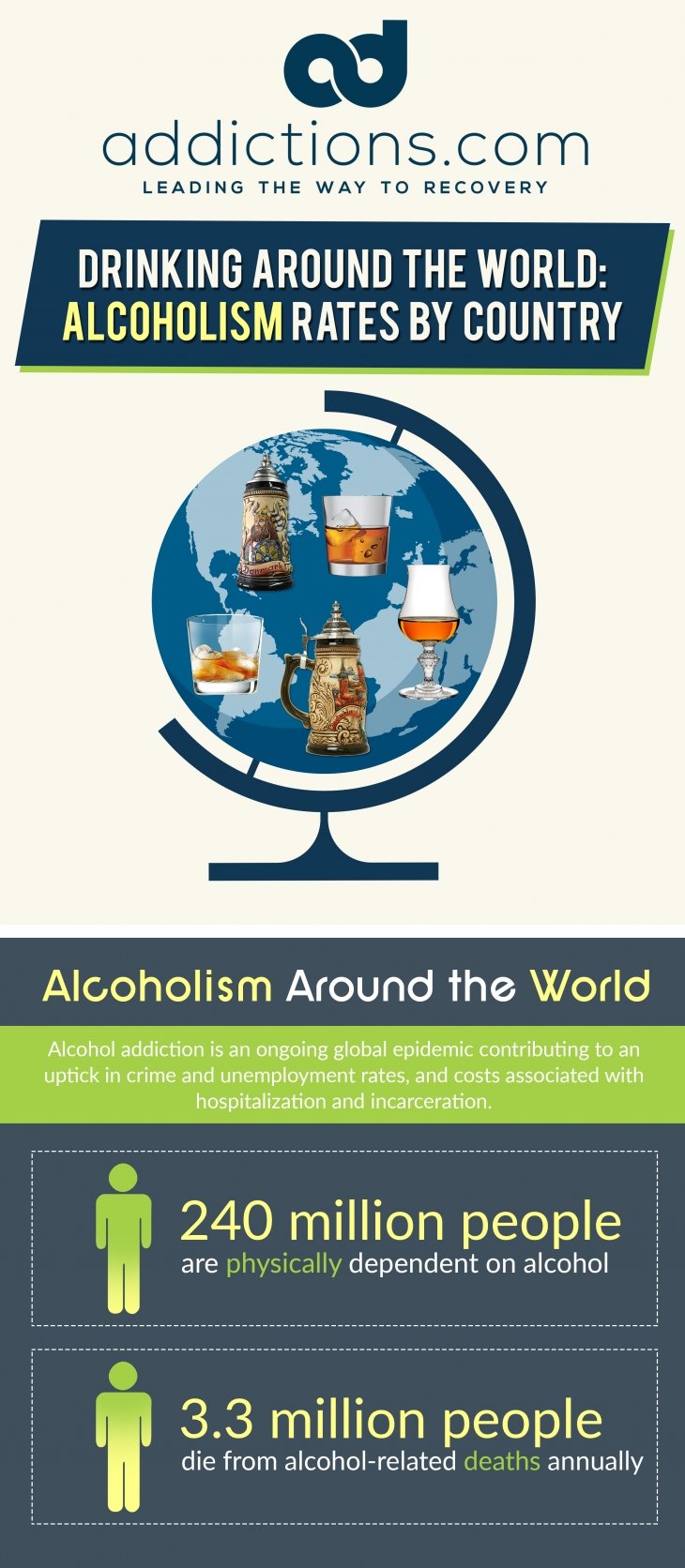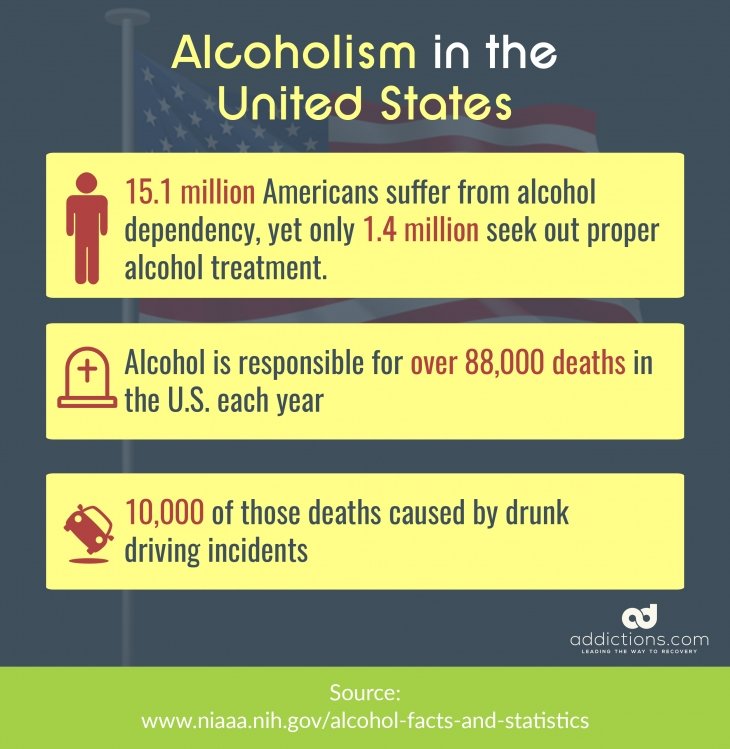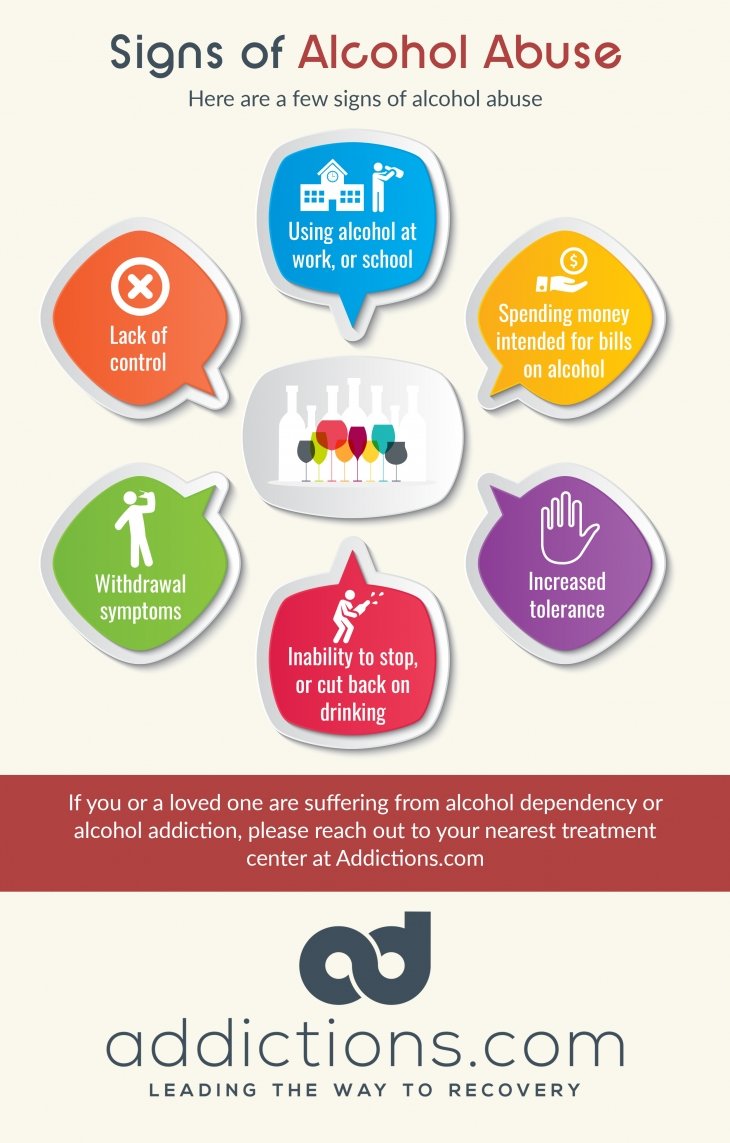Alcohol has been widely consumed for thousands of years by millions of people around the globe. People commonly drink alcohol at social gatherings like weddings and parties and even include alcohol in their religious and cultural traditions. While alcohol is a legal substance in most parts of the world and can be safe when consumed in moderation, abusing alcohol can lead to serious problems with alcoholism, or alcohol addiction.
Alcohol addiction is an ongoing global epidemic contributing to increased crime and unemployment rates, as well as costs associated with hospitalization and incarceration. Alcohol addiction has led to an increase in the number of deaths caused by alcohol-related auto accidents, and an increase in incidents of serious health conditions associated with alcohol abuse, such as cirrhosis. Worldwide, an estimated 240 million people are physically dependent on alcohol, and an estimated 3.3 million people die every year due to alcohol-related causes.
A recent study from Finland found that adults who live close to a bar are more likely to drink alcohol on a regular basis, and for every kilometer, a person moves closer to a bar increases their risk of becoming a heavy drinker by 17%. This study shows what we already know—that a person’s environment impacts their alcohol consumption. Naturally, living in a culture where heavy drinking is the norm will increase a person’s risk of alcoholism.
Tackling alcohol addiction on a global scale can help improve public safety around the world, and the quality of lives of those affected by addiction. Strategies can be implemented at home, at the national level, and around the world to tackle this epidemic head-on and prevent it from becoming worse.
Here’s a look at the top 10 countries that struggle with alcoholism according to World Health Organization data from 2010, along with what you can do at home to prevent you and your loved ones from becoming victims of alcohol addiction.
1. Belarus Alcohol Consumption
Belarus has the highest alcohol consumption rate in the world, with residents consuming an average of 17.5 liters of pure alcohol every year. A whopping 11 percent of the Belarus population are physically dependent on alcohol. Alcohol abuse contributes to the country’s suicide rates, which are also among the highest in the world.
The majority of problems with alcohol addiction in Belarus occur in rural areas, where small farming villages lack sources of entertainment such as libraries, clubs, and community centers. Farmers and others in Belarus agricultural communities frequently regard alcohol as a favorite leisure activity and can purchase spirits at nearly any local shop. Many Belarus citizens affected by the country’s poor economy also use alcohol as a way to cope with daily life.
To reduce its alcohol addiction rates, Belarus has tightened laws surrounding drunk driving and has banned some of its most dangerous alcoholic substances. Belarus is also trying to pass a bill that increases the legal drinking age from 18 to 21.
2. Moldova Alcohol Consumption
People in Moldova consume an average of 16.8 liters of pure alcohol every year, with 65 percent of those beverages being spirits such as vodka and brandy. In Moldova, only 3.3 percent of residents suffer from alcohol dependence, most of which are men.
Moldova has one of the poorest economies in Europe but is also a major wine producer, and both of these factors contribute to the country’s high alcoholism rates. Like Belarus and many other countries that made up the former Soviet Union, Moldova is trying to pass laws surrounding legal drinking ages and drunk driving to improve its alcohol addiction rates.
3. Lithuania Alcohol Consumption
Beer is Lithuania’s top drink of choice when it comes to alcohol, and represents 46 percent of the country’s alcohol consumption. Lithuania residents drink an average of 15.4 liters of alcohol every year, with nearly five percent of the country’s population being physically dependent on the substance.
Historians say that mead was popular among Lithuanians until the 16th and 17th centuries, and was commonly consumed at most social events and used as medicine. Wine started rising in popularity later, followed by beer.
To address its high rates of alcohol addiction, Lithuania is working on increasing alcohol tax rates and extending the legal drinking age from 18 to 20. The country also wants to limit the hours during which alcohol is sold every day to prevent Lithuanians from fueling their addictions around the clock.
4. Russia Drinking Rates for Alcohol Consumption
Russians drink over 15 liters of alcohol every year, which is equivalent to roughly 1,500 shots of vodka. In 2012, over 30 percent of all deaths in Russia were caused by alcohol, with the average life expectancy being around 65 years. Historically, Russia has been suffering high rates of alcohol-related deaths since the late 1800s.
Genetics and history are said to be key factors behind why Russians abuse alcohol. Some scientists say Russians tend to drink more because their bodies metabolize alcohol in a slower manner that prevents them from experiencing hangovers. Others speculate that alcohol abuse is more problematic in Russia on behalf of its history: tavern owners in the 16th and 17th centuries were given incentives for high alcohol sales from the Russian government, which resulted in alcohol abuse becoming part of Russian culture.
Drinking in Russia became most prevalent during the 1990s when the former Soviet Union suffered its collapse. Many Russians used alcohol to mask symptoms of anxiety and depression just to cope with the state of the economy. Recent studies show that alcohol consumption in Russia is gradually on the decline, but the country still has a long way to go regarding decreasing its alcohol-related death rate.
5. Romania Alcohol Consumption
The Romanian population consumes 14.4 liters of alcohol per year. Beer represents half of all alcohol consumption in Romania, with wine and spirits making up the remaining 29 percent and 21 percent, respectively. Experts say that while an estimated two million Romanians abuse alcohol, the country is sorely lacking in alcohol rehab centers.
Alcohol rehab centers in Bucharest and other Romanian cities are poorly funded, and fail to offer patients psychological therapy following alcohol detox. As a result, alcoholics suffer frequent relapses and are never fully able to overcome their problems with addiction. Romania is also home to many ex-patriots who drink to cope with feelings of loneliness and isolation from family and friends.
Evidence shows that 70 percent of domestic violence cases and roughly 50 percent of homicides in Romania are associated with alcohol use, and that for every one person who suffers alcoholism, there are seven more people whose lives are negatively affected by alcohol. Historians say that in Romania, the popularity of alcohol consumption rose when political leaders began collecting taxes for alcohol sales in much the same manner as Russia.
6. Ukraine Alcohol Consumption
Alcohol dependence affects 2.2 percent of the Ukraine population, most of whom consume alcohol in the form of spirits and beer. Ukrainians consume an average of 13.9 liters of alcohol every year.
As part of Ukraine tradition, drinking is made part of most festive occasions — including small celebrations such as buying new furniture. Many Ukrainians begin drinking in their pre-teen years, though the current legal drinking age is 18. Children are raised to believe that drinking is part of normal, everyday life, and are routinely given alcohol from parents and other family members.
Alcoholism patterns in Ukraine are similar to those in Russia, which many residents turning to alcohol as a way to cope with struggles brought on by the economy and daily life. Ukraine has been suffering a steady decline in life expectancy since the 1960s, which experts attribute to alcohol addiction. In 2007, alcohol was responsible for 40 percent of all deaths among men, and 22 percent of deaths among women in Ukraine.
7. Andorra Alcohol Consumption
While many other countries on this list have poor economies, Andorra has a fruitful economy from prosperous tourism industry. Wine is the alcoholic beverage of choice in Andorra, where residents drink an average of 13.8 liters of alcohol per year. Roughly 3.4 percent of Andorrans suffer from alcohol dependency.
Many people from France and Spain travel to Andorra specifically to purchase alcohol due to its low costs and tax rates. Since Andorra does not belong to the European Union, citizens from these countries can benefit from fewer restrictions surrounding alcohol purchases. Andorra also lacks regulations associated with the advertising of alcohol and warning labels, which contributes further to its problems with alcohol abuse.
8. Hungary Alcohol Consumption
The average Hungarian consumes 13.3 liters of alcohol every year in the form of spirits, beer, and wine. Nearly 10 percent of the Hungarian population has been diagnosed with alcohol addiction.
Historians say that the rise of alcohol addiction in Hungary coincided with the Soviet occupation in the 1940s and 1950s but gradually increased throughout the decades along with alcohol-related death rates. Hungary’s alcoholism problem is said to stem mainly from loose policies regarding warning labels on alcoholic beverages, and low alcohol costs that make drinking affordable for nearly anyone in the country.
9. Czech Alcohol Consumption
Roughly 54 percent of all alcohol consumed in the Czech Republic is beer. People drink an average of 13 liters of alcohol per year in the Czech Republic, and 2.6 percent of the population struggles with alcohol dependency. Drinking beer is part of Czech tradition, and is widely accepted among both men and women in all age groups. In fact, Czech women consume more alcohol per capita than women in any other of the top 10 countries that struggle with alcoholism.
10. Slovakia Alcohol Consumption
Slovakia ties the Czech Republic in terms of alcohol consumption, where people drink an average of 13 liters of alcohol every year. Spirits represent 46 percent of the country’s alcohol consumption, followed by beer at 30 percent. The most popular spirit in Slovakia is vodka.
Despite the country’s zero-tolerance policy when it comes to drunk driving, Slovakia continues to struggle with alcohol addiction on behalf of widespread social acceptance of drinking. Slovakia is home to 120,000 diagnosed alcoholics, many of whom refuse to seek addiction treatment because of their country’s social customs.
Fighting Alcohol Addiction Globally and at Home
Though the U.S. is far from ranking among the top 10 countries for alcohol addiction, millions of Americans experience the same struggles with alcoholism as those in the countries that made this list. Roughly 15.1 million adults in the U.S. suffer from alcohol dependence, yet only 1.4 million are receiving addiction treatment. Plus, an estimated 88,000 Americans die from alcohol-related causes every year, with nearly 10,000 of those deaths caused by alcohol-related auto accidents.
The U.S. is currently working with the World Health Organization to reduce alcoholism rates around the world and at home. At a recent global strategy meeting conducted by the WHO, the U.S. agreed to tackle alcoholism on a national level by improving monitoring and surveillance surrounding alcohol sales and use, and by changing the way alcoholic beverages are marketed. The U.S. has also agreed to tighten drink-driving policies and restrictions on the availability of alcohol.
As U.S. leaders address alcoholism on the national level, Americans can address alcoholism at home through a series of measures that lower the risk for alcohol abuse and addiction. Parents can educate their children about the dangers of alcohol use, and keep alcohol safely locked away to prevent experimentation and abuse among youth. People can also learn to recognize common signs and symptoms of alcohol addiction and find out what to do when someone needs help so they can connect their loved ones with alcohol rehab centers.
Alcohol addiction is commonly treated with a combination of inpatient detox and counseling. Detox helps patients overcome physical dependency on alcohol, and often involves the use of therapies and medications that reduce alcohol withdrawal symptoms such as headaches and anxiety. Counseling and cognitive-behavioral therapy are effective at addressing the root psychological causes of addiction and teaching patients how to navigate daily life without relying on alcohol to cope with stress, life challenges, and negative emotions.
The better informed the public is about the dangers surrounding alcohol addiction, the better America can fight its ongoing epidemic.




